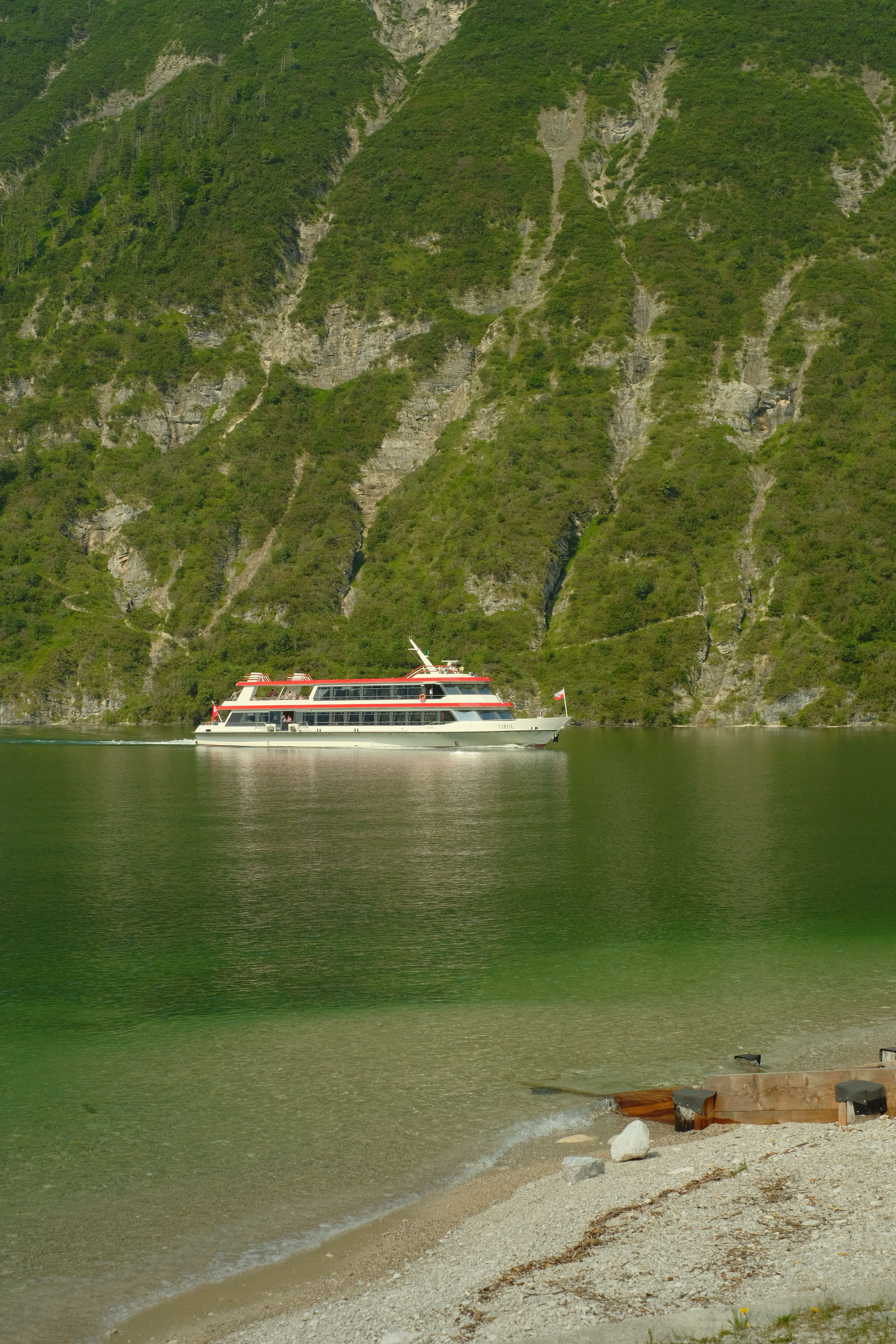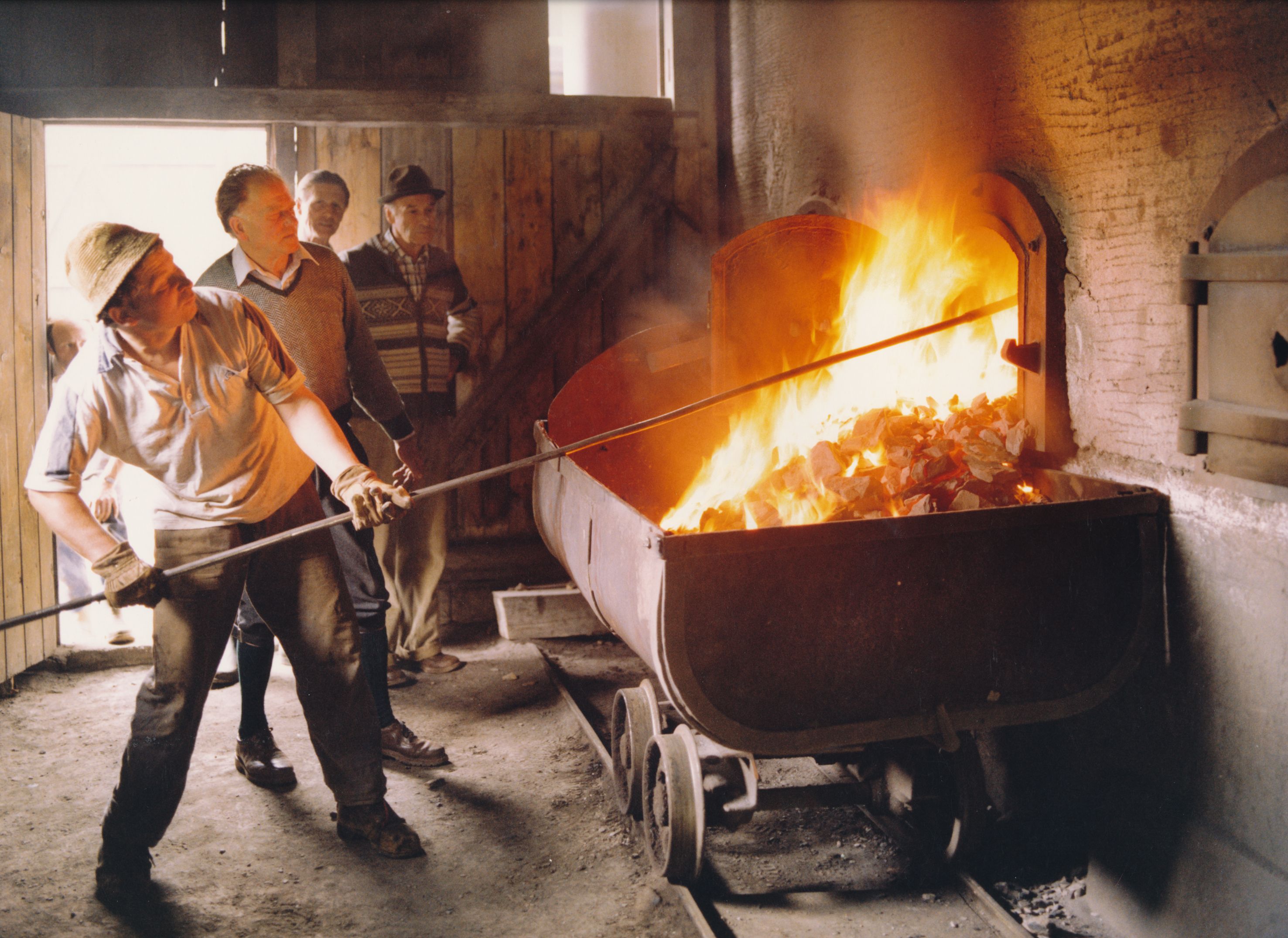![[Translate to English:] Achensee mit Blick auf das Karwendelgebirge [Translate to English:] Der Achensee aus der Vogelperspektive. Durch die Wolkendecke brechen Sonnenstrahlen.](https://www.tyrol.com/images/HDEOUmlDXRY/cb:/crop:5645:4032:nowe:0:0/gravity:fp:0.49991142604074:0.5/aHR0cHM6Ly93d3cudHlyb2wuY29tL2ZpbGVhZG1pbi90aXJvbC9TY2h3aW1tZW4vRmFrdGVuX0JhZGVzZWVuL0FjaGVuc2VlL0FjaGVuc2VlX19CbGlja19hdWZfS2Fyd2VuZGVsZ2ViaXJnZV9fQWRsZXJ3ZWdfRXRhcHBlXzA4X18xXy5qcGc)
Although Lake Achensee is more than 30 kilometres from Innsbruck as the crow flies, the lake is owned by Tirol's regional capital. In centuries past it belonged to the Benedictine monastery of St. Georgenberg-Fiecht. Records show that the Countsof Schlitters donated Lake Achensee and the Achental Valley to the monastery in the 12th century. Due to economic problems, the Benedictines had to sell the lake to Innsbruck in 1919. The purchase of the lake prompted Innsbruck City Council to set up Tiroler Wasserkraftwerke (Tirolean Hydroelectric Power Plants) to use the lake's water to generate energy - something you can read more about in fact number 5.
Emperor Maximilian I is often referred to as the "first guest to stay at Lake Achensee". More than 500 years ago he regularly travelled to his hunting lodge in the village of Pertisau on the western shore of the lake. At this idyllic spot, surrounded by untouched nature, the Emperor would enjoy hunting and fishing with his entourage. Even back then the nobility were keen fans of the fresh mountain air and the crystal-clear water at this large natural lake. In a hunting and fishing book that Maximilian commissioned at the time, the Emperor spoke in the highest terms about his stays in the Achental Valley. Although his "summer retreat" at Lake Achensee was reserved for a small elite, it laid the foundations modern-day tourism in the region.

Over the years, many beautiful buildings have been erected around Lake Achensee, one of which was the imposing Grand Hotel Scholastika. On the north shore of the lake, where a customs house and later a popular inn stood in the Middle Ages, the magnificent Grand Hotel was opened at the end of the 19th century - complete with turrets, bay windows, a chapel, a guest garden and direct access to the lake. Many distinguished guests stayed here, including the writer Karl May. On a fateful night in October 1913, however, fire broke out in the hotel for unknown reasons, destroying most of the property. Today, the Scholastika Restaurant is located on that spot, offering diners fine views and delicious dishes with interesting names such as "Full Moon" and "Forest Whispers".
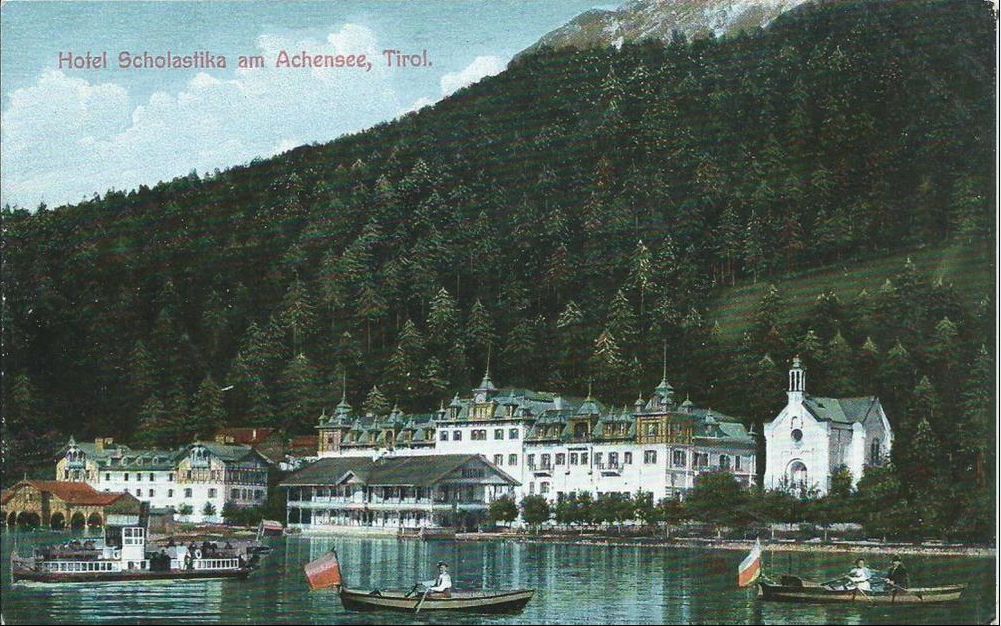
Late in the evening, after a few drinks, locals in the Achental Valley like to tell one or two unbelievable stories about the lake - for example the legend of the sunken village. Where Lake Achensee is located today, there is said to have once been a thriving and prosperous village. One day, when a poor old man asked for food and shelter for the night, he was mocked and chased away. The old man climbed the mountain and cursed the village of cold-hearted people. Thereupon, tremendous rain showers and torrents flooded the village, which disappeared forever under the masses of water. If you visit Lake Achensee on a clear day, you may even see the top of the church tower shimmering through the surface of the water.
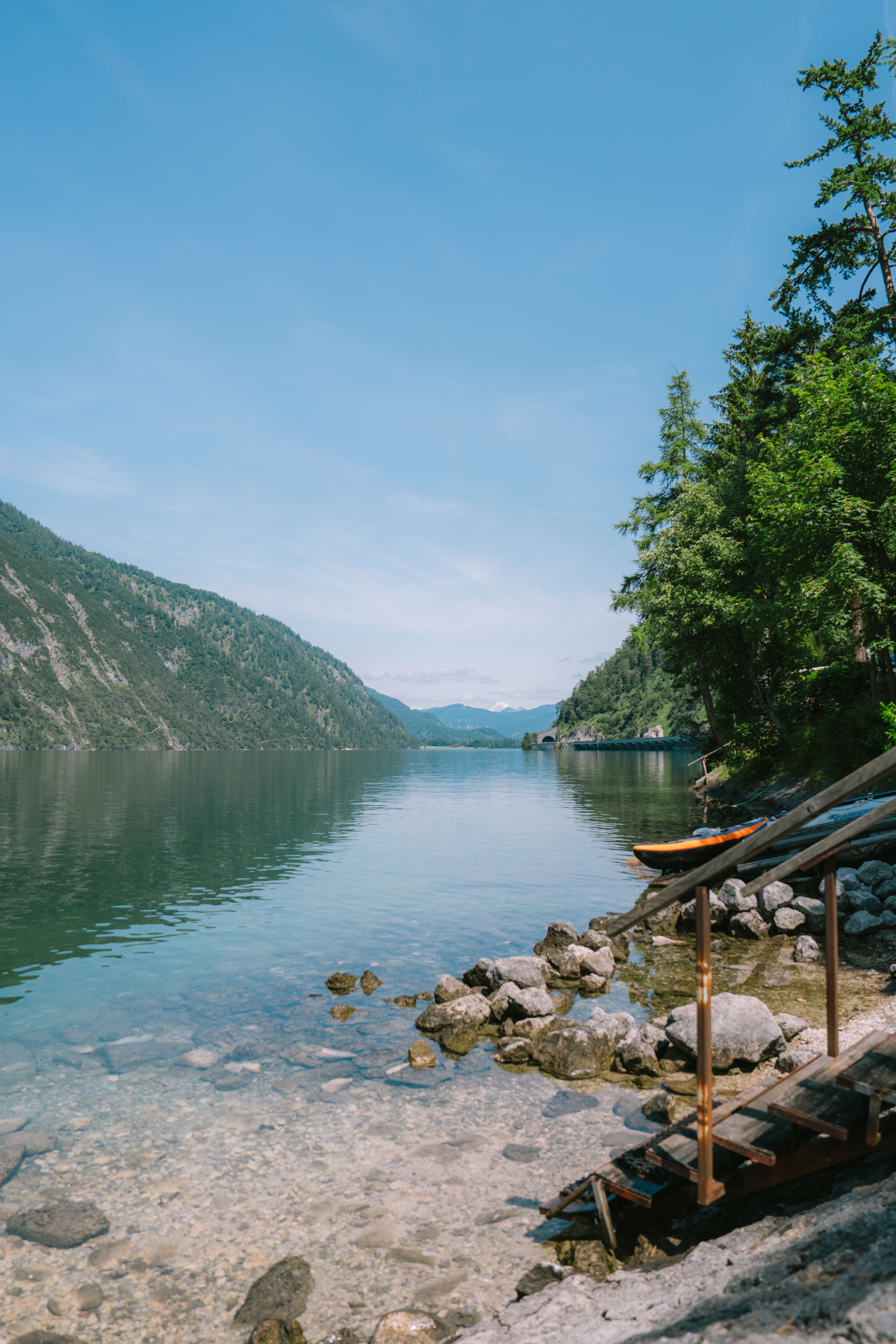
Anyone who has seen Lake Achensee in winter has probably noticed the low water level. During the winter months the water level drops by up to five metres. The reason for this is not a rare natural phenomenon but the use of the lake's water to generate electricity. An unbelievable 38 million cubic metres of water are used to create power. The water is transported via pipes into the Lower Inn Valley and fed into the power station in Jenbach. The generators of the Achensee Power Plant produce 219 gigawatt hours of electrical energy per year, much of it in winter. This is enough to power around 50,000 households. By the time summer comes around, inflowing water and melting snow fill the lake back up to its normal level.
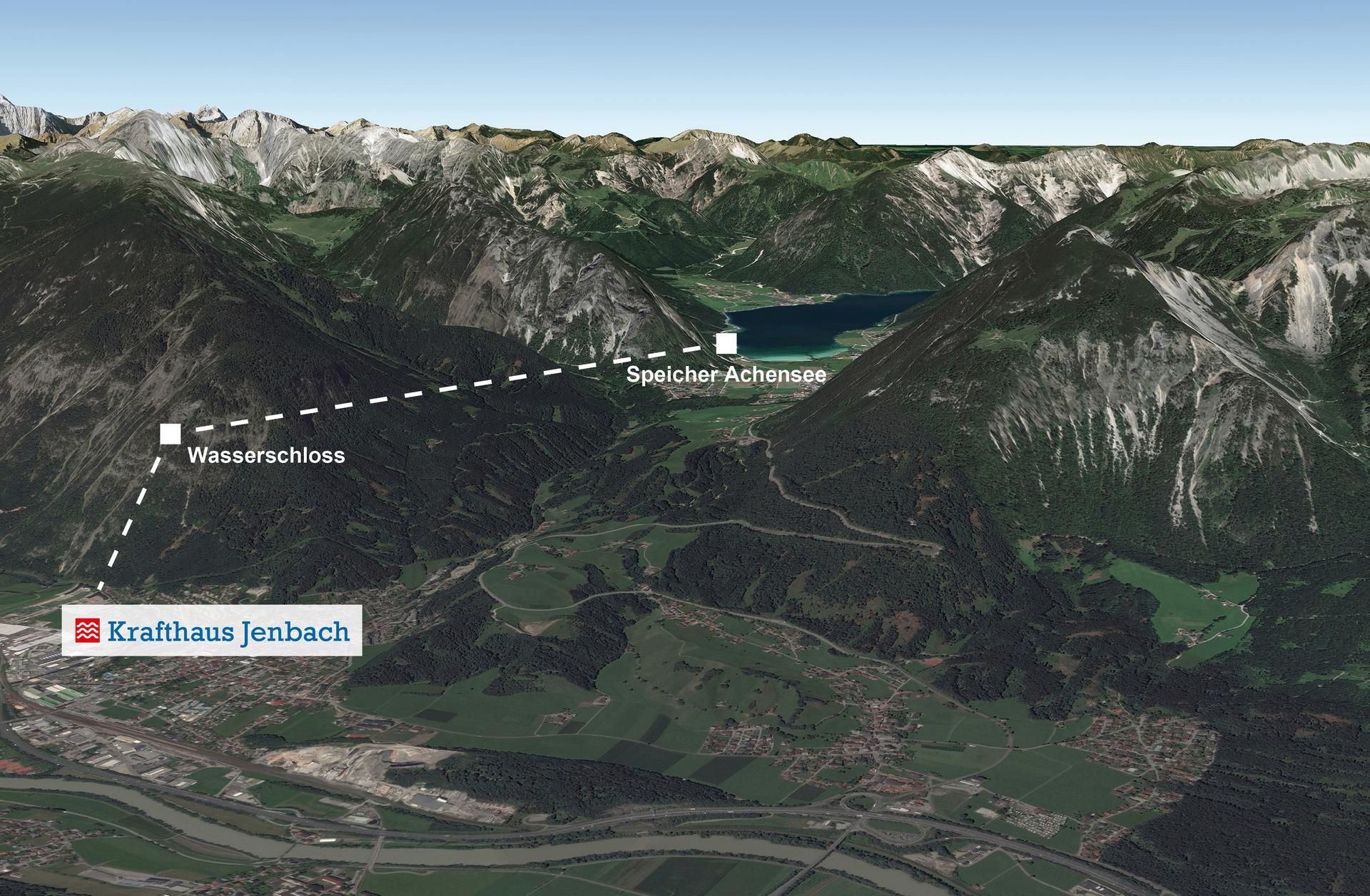
Two or three generations ago, rowing on Sundays was the most popular leisure activity on Lake Achensee. Today, it is mainly sports enthusiasts who shape the image of the lake all year round with their sailing boats, wings, kites and windsurfing boards. The reason for this is the ideal wind conditions. In the mornings there is usually a light southerly wind; in the afternoons a strong northerly wind blows in from Bavaria, making water sports on Lake Achensee a fun but challenging experience. Many (successful) water sports clubs have sprung up around the lake in recent years, and the lake has become a popular venue for international competitions. Even European and World Championships have been held here.
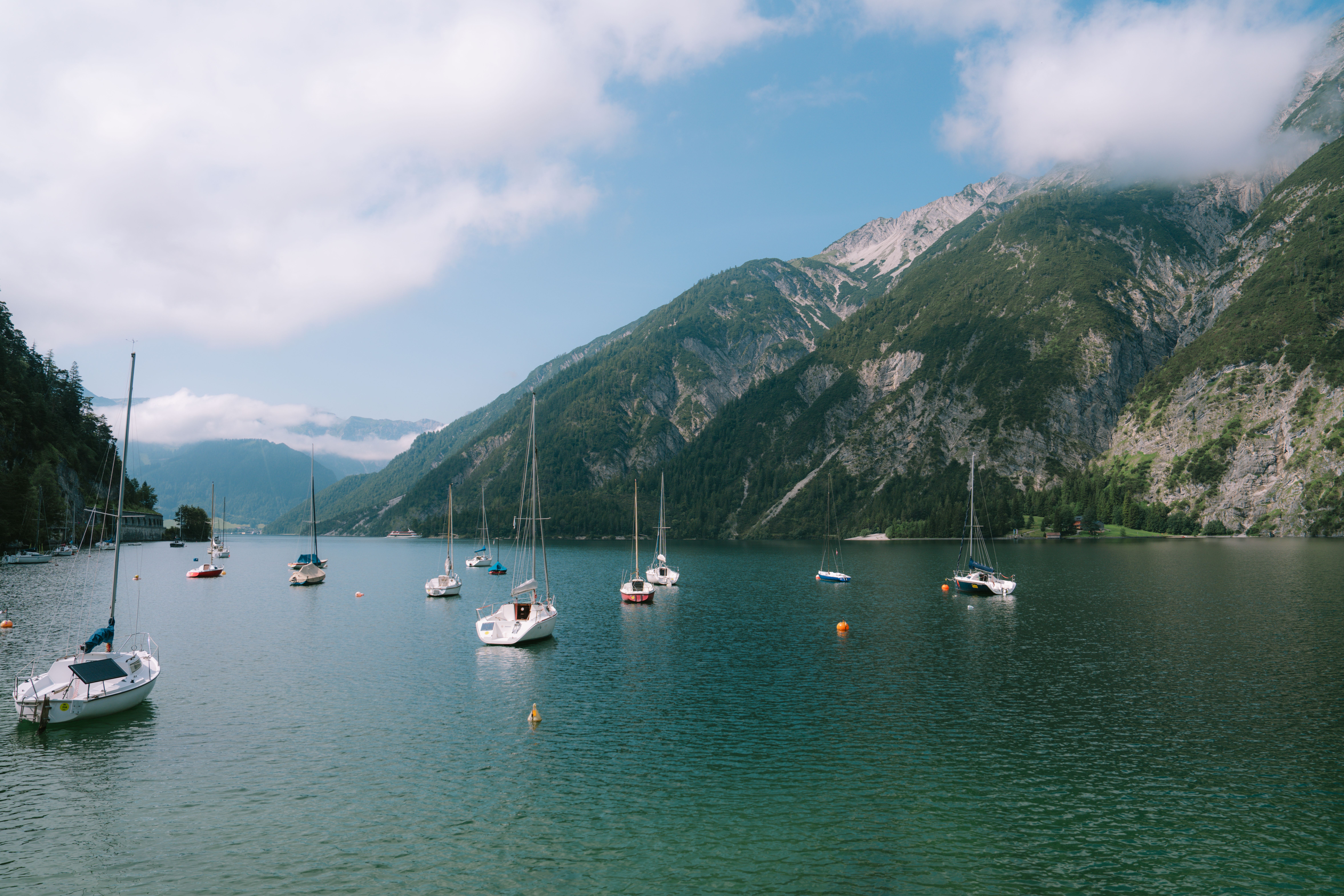
Since Lake Achensee is situated at an altitude of over 900 metres above sealevel, measures 133 metres at its deepest point and is supplied with water by mountain rivers and meltwater, its remains relatively cold all year round. While on summer days the water can reach up to 22°, the tradition of swimming in Lake Achensee in December is for hardcore visitors only - the temperature is normally around 3° Celsius. There is a traditional New Year's Eve swim every year on 31 December when the bold and the brave plunge into the ice-cold water and climb a floating iceberg.
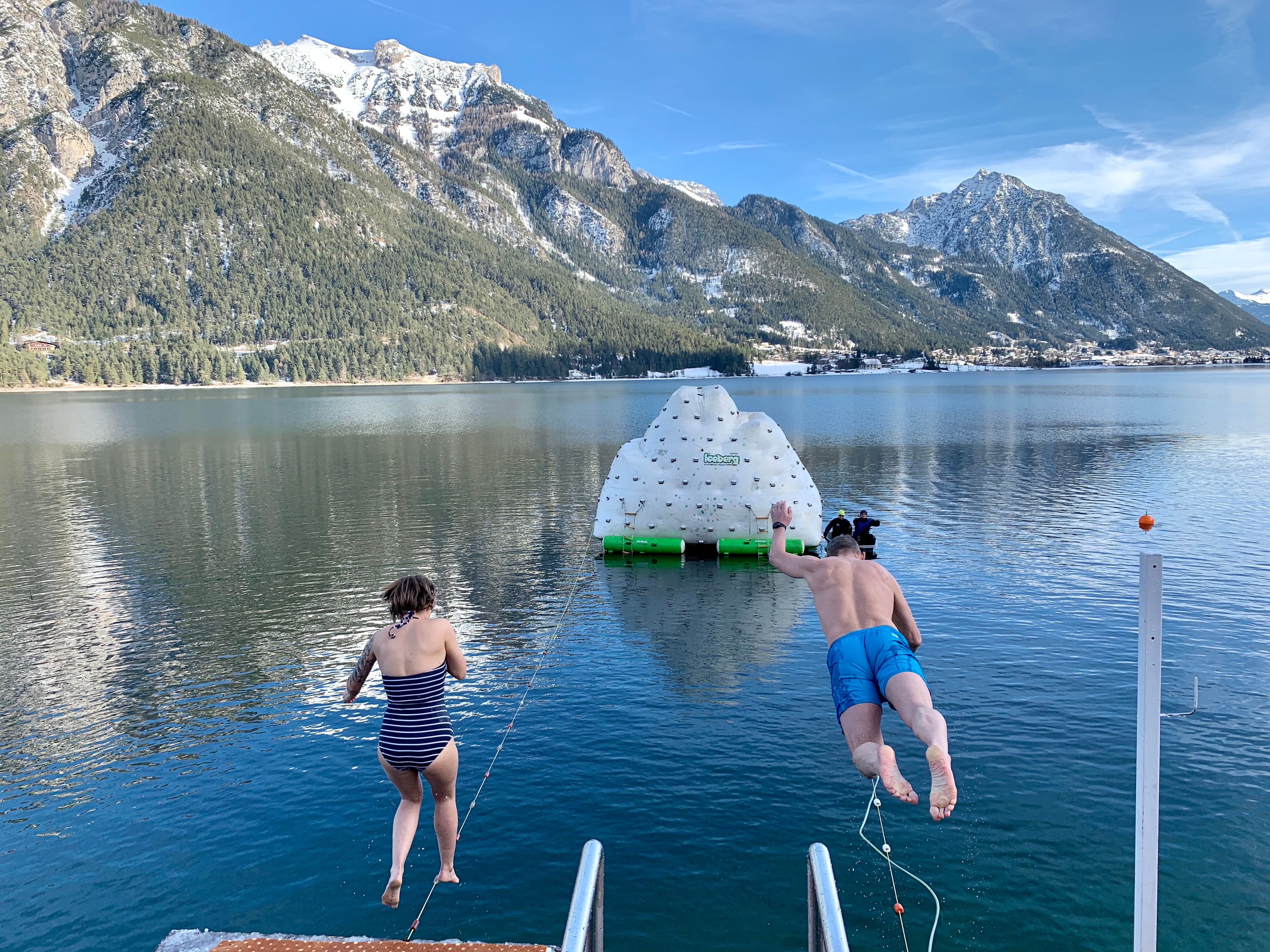
One of the most persistent rumours around Lake Achensee is the story of an undiscovered drain that is said to reach all the way to Lisbon. Yes, that's right: Lisbon! How did it come about? On 1 November 1955 there was a devastating earthquake in Portugal's capital that destroyed almost the entire city. At exactly this time locals at Lake Achensee observed how the previously calm lake suddenly formed wild waves and the water level instantly dropped by more than a metre. Only after 24 hours did the lake fill up again to its normal level. The next time the earth shakes in Lisbon, you should keep a close eye on Lake Achensee...
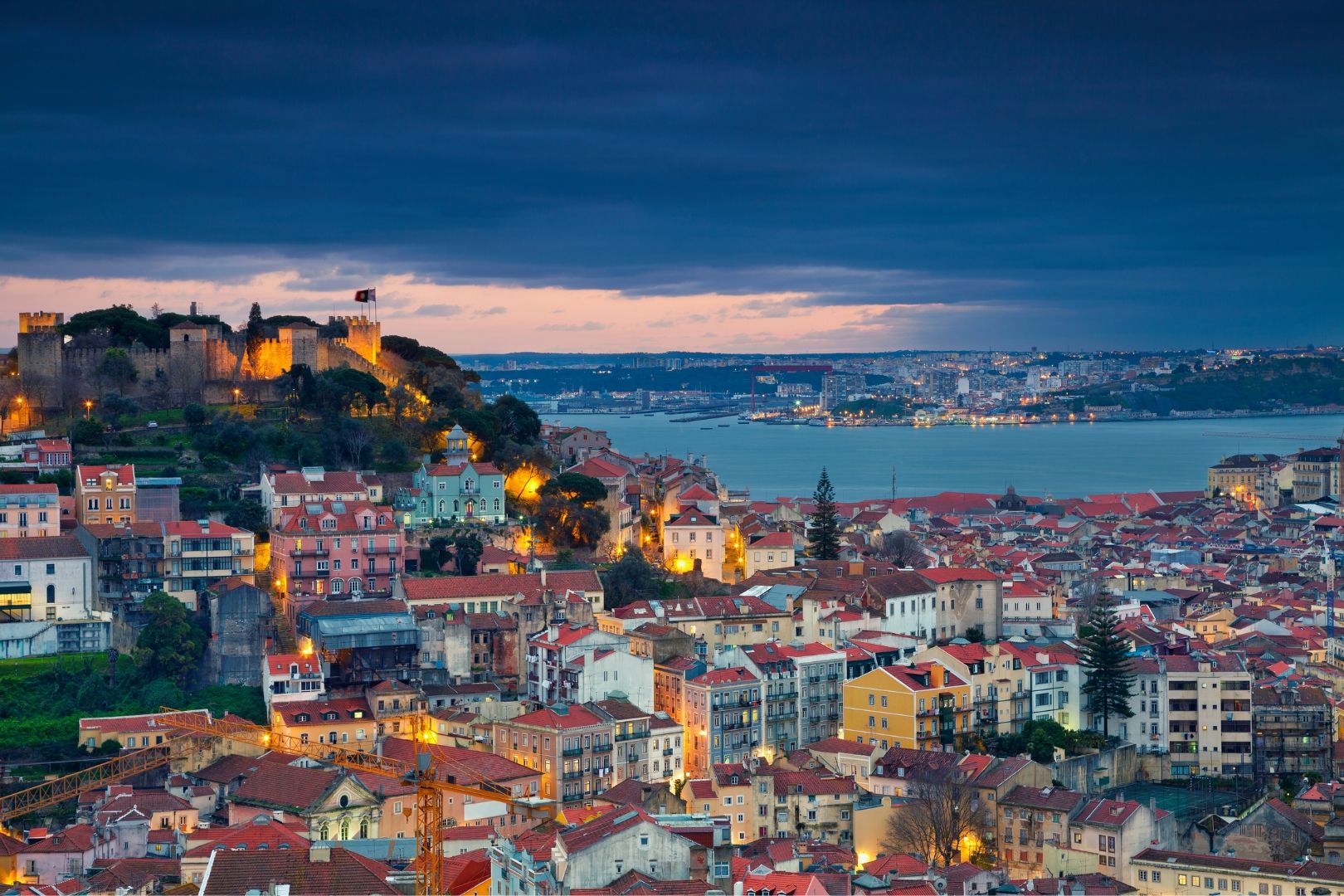
Over 130 years ago the Abbot of Fiecht Abbey, Albert Wildauer, took out a loan equivalent to 240,000 euros to commission a sightseeing ship for Lake Achensee. The steam-powered "St. Josef" was built in Linz, delivered in parts by rail to Jenbach, transported by horses to Pertisau and assembled there. In 1887 the "St. Josef" was put into service and soon shipping on Lake Achensee was very popular with guests and locals alike, something that has not changed to this day. The current fleet comprises three ships, with highlights including concerts, theatre performances and culinary events.
A black oil extracted from stones? No, really! More than 100 years ago, Martin Albrecht found the first oil shales at Lake Achensee. Later he discovered another mighty oil shale deposit in the Bächental, a side valley in the Karwendel Mountains. The production of the oil is complex. First, the shale has to be blasted out of the mountain, then the lumps of rock are put into ultra-modern shaft furnaces. At a temperature of 450°C, the oil shale releases a gas that is condensed or liquefied. The resulting rock oil is then filtered, distilled and processed into various products. Why go to all this trouble? Because stone oil has for centuries been said to have a beneficial and nurturing effect on a variety of ailments. You can see for yourself during a visit to the Vitalberg Stone Oil Museum in Pertisau.
